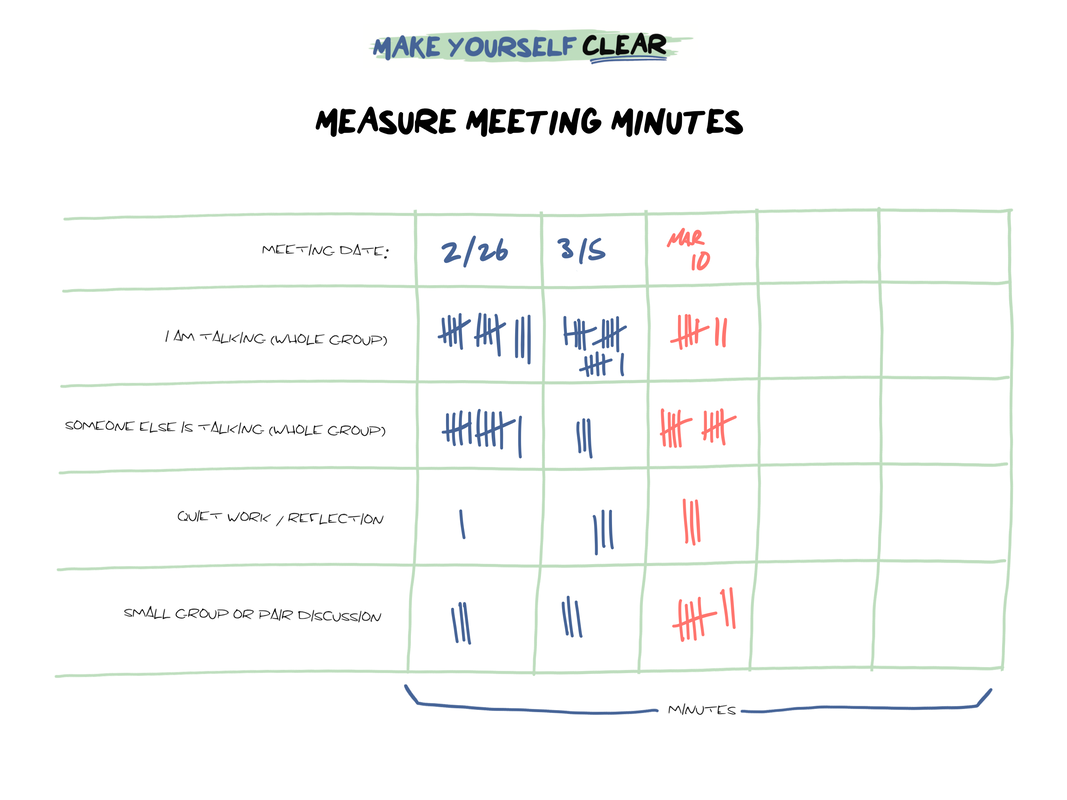|
From Chapter 11 of Make Yourself Clear Timely feedback is key. Feedback that can be used to cause the right adjustment at the right time, to benefit the student, helping her do her work better, and the teacher, helping her do her job better, and helping the school, helping it meet its mission better. And the key hinge is really feedback and assessment and most likely formative assessment, in the moment, when the stakes are low.
0 Comments
In Make Yourself Clear, we provide the following description of pre-assessment, borrowed from research on teaching and learning and applied to the context of business :
Asking the right questions up front to understand where customers are in their individual or company journey; using that information to prepare for interactions and transactions with those customers. Here is a nice section from John Dewey's Experience and Education that is foundational to the practices of pre-assessment: It is possible of course to abuse the office, and to force the activity of the young into channels which express the teacher's purpose rather than that of the pupils. But the way to avoid this danger is not for the adult to withdraw entirely. The way is, first, for the teacher to be intelligently aware of the capacities, needs, and past experiences of those under instruction, and, secondly, to allow the suggestion made to develop into a plan and project by means of the further suggestions contributed and organized into a whole by the members of the group. The plan, in other words, is a co-operative enterprise, not a dictation. The teacher's suggestion is not a mold for a cast-iron result but is a starting point to be developed into a plan through contributions from the experience of all engaged in the learning process. The development occurs through reciprocal give-and-take, the teacher taking but not being afraid also to give. The essential point is that the purpose grow and take shape through the process of social intelligence. "There is a saying in the teaching profession: Whoever is working the hardest is learning the most. Too often, it’s the teacher. " - from Make Yourself Clear At the next 5 group or team meetings ( >3 people) of the same group that you have either called or have called people to (i.e., you are the meeting owner), keep track of how time is being used with the template linked below. If you are the person who called the meeting and cannot realistically run the meeting and manage the time tracking, ask a volunteer to be the time keeper. Once you have tracked time over the course of 5 meetings, ask yourself who is working the hardest? Who is learning the most? Documenting the use of time in this way makes it easier to identify patterns and introduce measures for course correction.
I followed the instructions on this post to create a simple workflow for adding a watermark to each page of a 250+ page PDF. I am sure there are paid and free tools that make this possible to do, but I really liked the idea of creating a 'Workflow' in Automator that followed this simple logic.
From Chapter 20 of Make Yourself Clear. An adventure requires commitment from both the leader and the follower. If you are the producer or leader, then you have to make the right invitation. You have to leave room for the consumer or follower to step forward, to make his or her own personal relevance. If you do not, then you are no better than the teacher who lectures and leaves no time for the class to synthesize; you are no better than the teacher who gives a test but never offers feedback. This visual aid summarizes some of the key points in the second part of Make Yourself Clear.
When you understand each individual from a larger audience you are trying to reach, you will be able to form a stronger relationship and ultimately be able to be clear in communicating to that collective audience.
It may not be possible to have all of the information necessary at all times, but it is helpful to sketch out and jot down what you know, or perhaps might be curious about, before engaging in a sales call, service request, individual meeting, or training session. Prior to writing our book, we spent time thinking about the various audiences we were trying to reach - building from existing knowledge of a few individuals as well as assumptions that were later confirmed or adjusted. Use this PDF to sketch out your own personas. I actually learned about this a couple of weeks ago following a share by one of my colleagues. Invision, maker of a digital product design platform, released a report with findings from a well-scaled survey they conducted. What I appreciated most from this report is the measurement rubric and language they used, both which give a vocabulary and some benchmarks for discussions and assessments within an organization.
|
|||||||










 RSS Feed
RSS Feed
